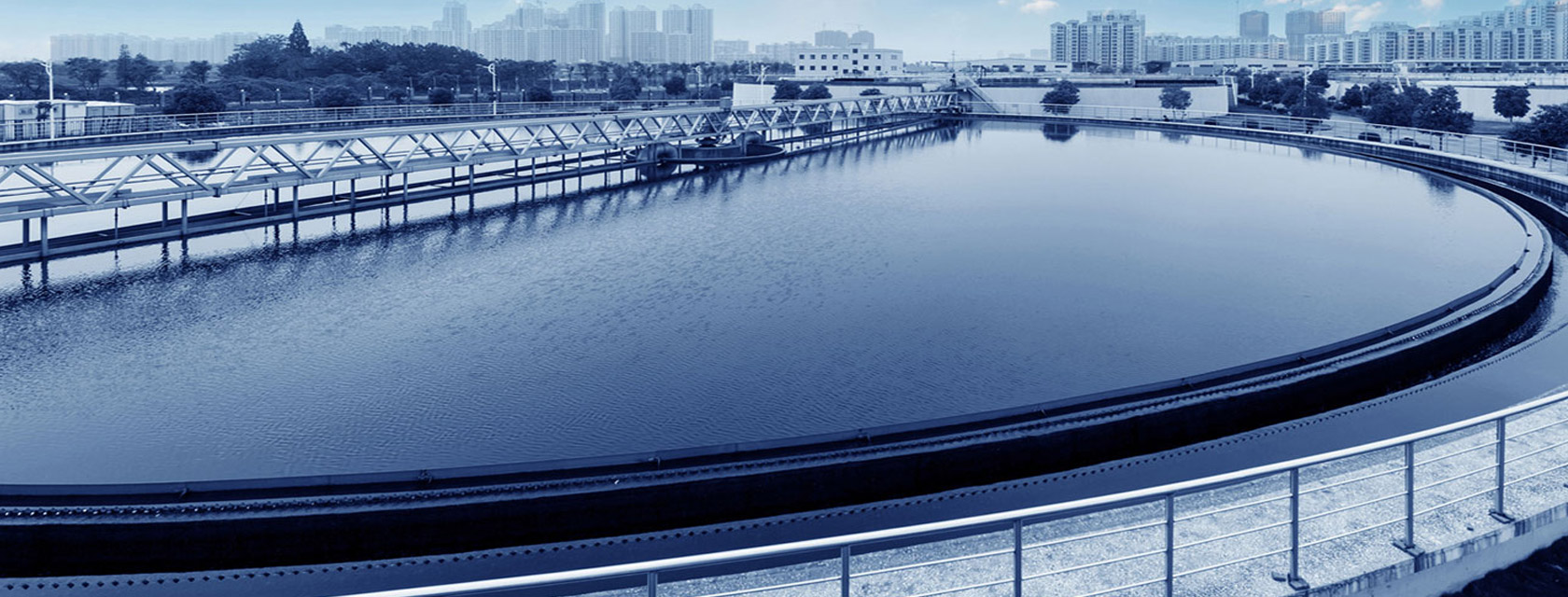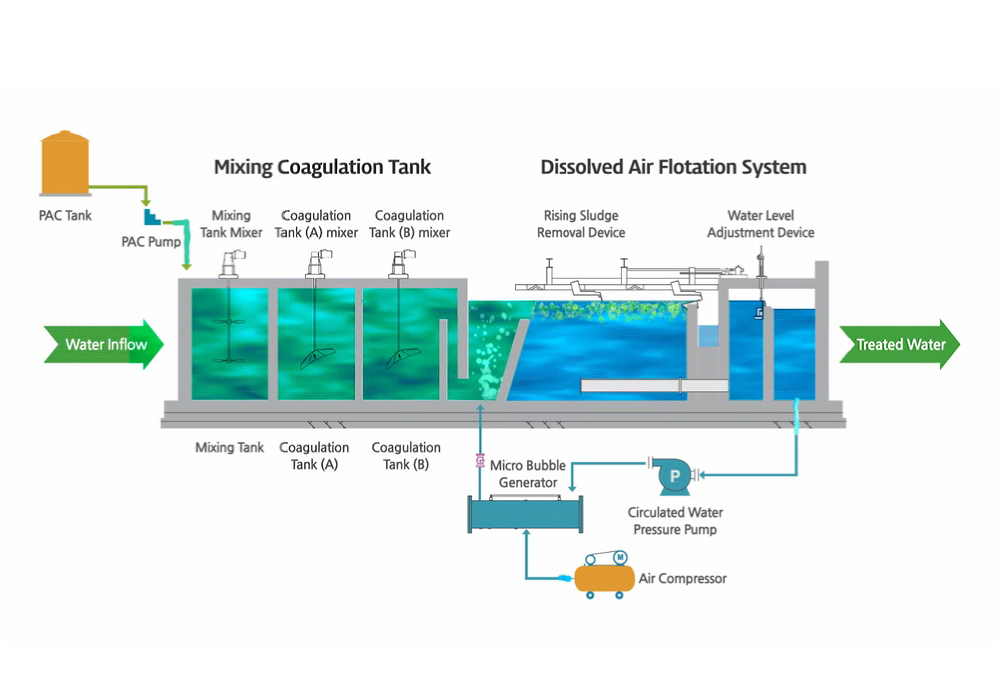- Malaysia No. +60-1112874409
- India No. +91-9963 98 3699
- krish@globalindustrialsolutions.co



Dissolved Air Flotation (DAF) systems remove suspended solids, fats, oils, greases and non-soluble organics by a process of dissolving air into water under pressure. The process begins with the water to be treated entering the DAF through an influent header box that reduces velocity and distributes the water across the length of the vessel. In order to optimize treatment, the influent header box is designed with multiple points at which whitewater, a highly saturated pressurized stream of air and DAF effluent, and flocculant, where applicable, are injected. Wastewater then enters the flotation zone and microbubbles from the whitewater attach to the particle surface and affect the particle density, causing the suspended solids to float to the surface of the DAF where they are skimmed by a chain and flight and separated into the sludge hopper. The treated wastewater is continuously removed at several points inside the DAF and discharges over pipe weirs into an effluent chamber. From there, it flows out of the DAF.
The Ideal DAF™ achieves high rate removal efficiencies at a low operational cost with a smaller footprint and longer lifespan by employing such techniques as:
Progressive Water Extraction – Extended retention time and better effluent quality
Cross-Flow Design – Lower velocity and better separation
Ideal DAG™ Technology – High removal efficiency, lower power requirement and lower chemistry
Plate Separators – Maximize solids removal
Thickening Beach – Sludge thickening
Cone Bottom – Easy sludge removal
With a polypropylene construction, the Ideal DAF offers benefits including:
Corrosion resistance Up to 9,000 GPM systems
High TDS and saltwater tolerance Chemical treatment flexibility
Heavy duty, lightweight construction
Wide pH range
High temperature tolerance
Guaranteed long life